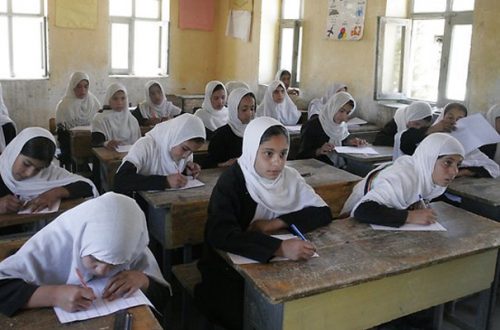Writing at The Guardian’s Comment is Free, Victoria Brittain lauds The New York Times for a special issue of its Sunday magazine highlighting women in the developing world as key agents of ending world poverty.
Fourteen years ago, in Beijing, the New York Times journalists covering the UN conference on women said openly that they had been told to cover Hillary Clinton and not bother with the conference issues. But that was then, and this is now, with the Times giving a lesson in how the media can change agendas when it decides to.
The New York Times writers of these articles are mainly men, with prize-winning war correspondent Dexter Filkins reporting on a girls’ school in Afghanistan and one of the paper’s best-known and most prolific columnists, Nicholas Kristof, ranging across Africa and Asia.
It has been decades since everyone in the aid world knew that research showed how improving women’s education led to better health for their families and communities, which led in turn to economic possibilities and theoretically to the growth of societies which would demand better governments.
The Nobel prize-winning economist Amartya Sen’s famous dictum that “No famine has ever taken place in the history of the world in a functioning democracy” can be seen as a buttress for this argument. Educated women resist ignorant dictators who impoverish their countries.
Yes. Exactly. Well said. And Dexter Filkins’s piece about the girls’ school in Afghanistan is essential reading. I thank Ms. Brittain for bringing it to my attention.
The cognitive dissonance comes in (or should come in) when we consider that Victoria Brittain sits on the National Council of George Galloway’s Respect party. And that Respect stands for an “end to the wars and occupations of Iraq and Afghanistan.” And that– as difficult as it is for some to swallow– if it hadn’t been for the war in Afghanistan, there would be no girls’ schools there. This is a point Filkins makes directly:
Eight years after the Americans came to Afghanistan, it is hard to find reasons to be optimistic about the future. In November 2001, when the Taliban clerics fled Kabul, the country lay in ruins. Today, it still does. Outside Kabul, there is hardly any government to speak of. There are governors, there are some police authorities and there is very little else. The roads are mostly broken and unpaved. Warlords hold much of the country in their hands. The goodwill that flowed so freely eight years ago has mostly disappeared, drained away by the failure to rebuild the country, to crush the Taliban and to do so without slaughtering innocents. It is easy to give in to despair.
And yet if there is one unambiguously positive change that the American-led enterprise has brought it is the education of girls. In 2001, only a million Afghan children were enrolled in school, all of them boys. The education of girls was banned. Today, approximately 7 million Afghan children attend school, of which 2.6 million, or roughly a third, are girls.
Filkins describes in heart-rending detail how the Afghan “resistance”– aka the Taliban– is trying brutally to end this bit of hope for Afghan girls and women by, among other methods, flinging battery acid in schoolgirls’ faces.
Of course Victoria Brittain isn’t the only one who can’t bring herself to acknowledge these plain facts. Has anyone ever said something like, “I opposed the US-led invasion of Afghanistan, I still think it was wrong, but I do recognize it made it possible for millions of Afghan girls to go to school”?
If so, I’d like to give them credit.
(Hat tip: Karl Naylor)
